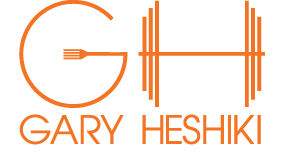3 Reasons Your Lower Back Hurts That Has Nothing To Do With Your Back
Lower back pain is something most of us will deal with at some point in our lives. You bend over to pick up your kids or tie your shoelaces and BAM! out of nowhere your back goes out. An overwhelming number of low back injuries stem from chronically poor body mechanics and even more likely from poor everday posture.
If you’re reading this on your phone, take a moment to sit up straight and pull the phone up so your neck isn't being cranked downwards.
Here are three things you need to know about back pain:
1. Back Pain Worse After Standing- Extension Based
Back Pain Worse After Sitting- Flexion Based
For those who suffer from extension based back pain this is likely caused by: Short Hip flexors, poor glute activity and a lack of anterior core stabilization. The combination of weak glute function with shortened hip flexors often leads to lumbar extension substituting for hip extension during activities such as deadlifting, jumping, and running. Put simply if you aren’t putting your glutes into it, you back will be.
A sure fire postural sign a person is a candidate for extension based back pain is viewed from the side via anterior pelvic tilt, or the back of your pelvis is higher than the front.
I meant to take a buttfie
Flexion based back pain often afflicts those who sit for long periods of time like office workers or truck drivers. The main muscle that creates problems for these individuals is the Psoas. This is the only hip flexor that remains active once you draw your leg up above 90 degrees. Those seeking hip flexion like during a squat will get lower back rounding instead. Their problems are aggravated by a host of other factors such as: Poor glute function, cervical spine positioning, lack of thoracic spine extension and poor anterior core stability.
Someone with this type of back pain is in a catch-22. They need to stop sitting so much but they likely sit a lot due to work. For this individual I would recommend setting a timer to periodically stand up and stretch to break up the monotony. Along with taking time each day to use a foam roller or lacrosse ball to break up any soft tissue adhesions formed in the hip flexor muscles.
2. Not All Back Pain is Due to “Tight” Hips
From an anatomical standpoint the hip flexors are a combination of muscles: illiopsoas, sartorius, and rectus femoris.
Lets focus on the Psoas.
The psoas attaches through the side of the lumbar spine and connects to the discs in the area of T12-L5. Because of this vertebral origin point, the psoas is also involved in 360 degrees of spine stabilization.
For those who believe they have chronically tight hip flexors, stretching them isn’t going to magically solve the problem because the underlying cause may not be tight hips but an unstable spine and poor core strength. If a muscle is short and tight, stretching it won’t release any neural tone which only leads to it tightening back up afterwards.
Their issues may be solved simply through core and glute activation.
A properly performed plank will solve all that ales you. Not only because by staying in a neutral position will you decrease recruitment of the illiopsoas but also by squeezing the glutes hard you’ll force the muscle to relax due to reciprocal inhibition.
Talking about hips and glutes leads me to the final point
3. Poor Internal-External Hip Rotation
A quick screen for both:
Need Internal Rotation 35 degrees
External Rotation 45 degrees
Less than stellar results?
Corrections:
Need Internal Rotation- Side Plank
External Rotation- Prone Plank
The muscles that resist internal rotation are all located on the outside of the hip. By stimulating these muscles it forces them to all stabilize the spine and possibly allow your hips and core to work correctly.
On the other side of the equation are the muscles that resist external rotation found on the inside and anterior aspect of the hip. All these muscles co-mingle when it comes to core stability. Like in the aforementioned tip, when a properly performed prone plank is performed, the hip flexors are held in a tight stretched position to help the hips and spine stabilize.
Correcting these restrictions can bring relief to those suffering from chronic lower back pain. These screen are the beginning to figuring out if you need more mobilization or simply needed more stability.







